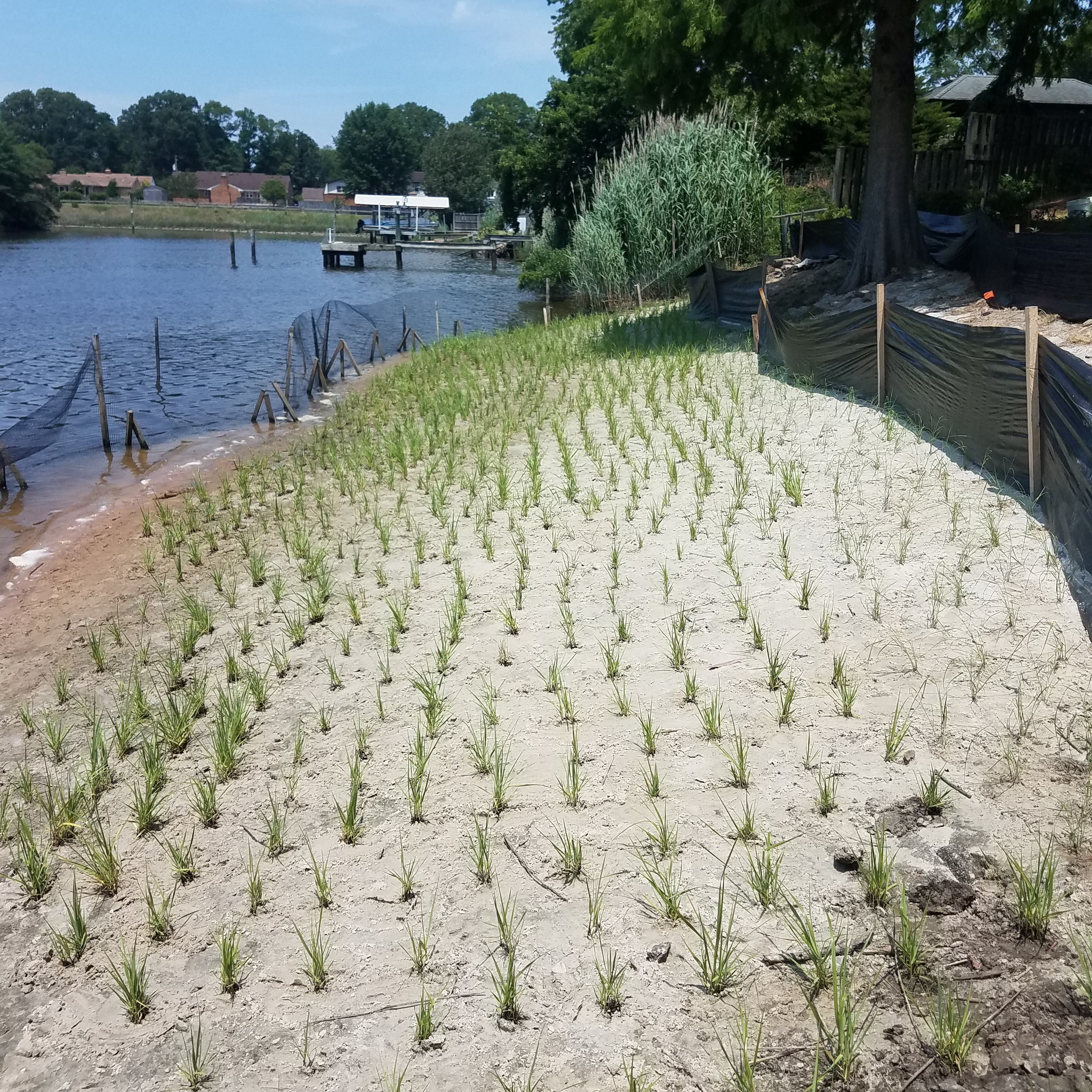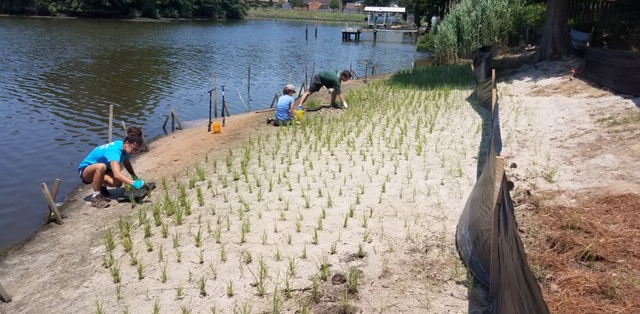Erosion has long been an issue for the James River Watershed, and the Lower James is no exception. Until recently, the only accepted method to combat the loss of sediment was to build hardened structures such as bulkheads or revetments. Often times, property owners would pile discarded concrete, called “materials of convenience” on their failing shorelines. A green alternative to this “hard stabilization” is to build a marsh, also known as a “living shoreline.”
This May, staff from the James River Association assisted the Elizabeth River Project with the construction of a living shoreline on the Eastern Branch of the Elizabeth River in Virginia Beach. This heavily urbanized body of water experiences many issues with storm water runoff, pollution, and excessive sediment load. The new shoreline consisted of biodegradable coconut-fiber coir logs to hold the marsh edge, and a backfill of sand to replace what was lost. The sand was then graded to a low slope to minimize what wave and tidal action can wash away. Then, staff from the Elizabeth River Project and the James River Association planted about 1,200 plugs of native salt marsh grasses, smooth cordgrass and salt-meadow hay.
Eventually, these grasses will grow, thrive, and reproduce in their reclaimed native habitat. This will not only mitigate erosion, it will also attenuate wave action from storms, and provide habitat for many species such as blue crabs and juvenile striped bass.
The best way to learn about restoration projects is to get hands on experience! Join our partners at Elizabeth River Project this summer to install living shorelines!



